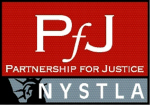 As structured settlement advisors we spend most of our time solving problems for our clients and our clients’ clients. Dealing with Medicare and future medical set aside issues is an area where clients regularly turn to us for help because the Center for Medicare and Medicaid Services (CMS) has been almost silent as it pertains to Liability cases. This often presents a major complication in settling personal injury claims because many lawyers do not know what to do and want to rely on guidelines to rely on a case by case basis.
As structured settlement advisors we spend most of our time solving problems for our clients and our clients’ clients. Dealing with Medicare and future medical set aside issues is an area where clients regularly turn to us for help because the Center for Medicare and Medicaid Services (CMS) has been almost silent as it pertains to Liability cases. This often presents a major complication in settling personal injury claims because many lawyers do not know what to do and want to rely on guidelines to rely on a case by case basis.
One thing we have learned over the years is that the best way to solve a problem is to start out by figuring out if you really have a problem at all. Sometimes things only look problematic but really turn out to be quite straightforward – after a little bit of inquiry or diligence. We do not recommend doing “nothing” but sometimes doing nothing is the correct answer.
The soundness of our approach has just been upheld by a recent decision handed down by a U.S. District Court in the case of (Berry v. Toyota). The court ruled that the settlement for a Medicare-eligible plaintiff’s claim was valid without a Medicare set aside, given the fact that all of the plaintiff’s treating physicians had signed affidavits indicating that no future accident-related treatment was going to be required.
This is an important decision and a real victory for common sense. Up until now we have been operating in a bit of a blind with only very limited guidance from CMS about how to deal with such situations. Prior to the Berry decision, all we had to rely on was one CMS policy memo issued in 2011, which read, in pertinent part:
Where the beneficiary’s treating physician certifies in writing that treatment for the alleged injury related to the liability insurance (including self-insurance) “settlement” has been completed as of the date of the “settlement”, and that future medical items and/or services for that injury will not be required, Medicare considers its interest, with respect to future medicals for that particular “settlement”, satisfied. If the beneficiary receives additional “settlements” related to the underlying injury or illness, he/she must obtain a separate physician certification for those additional “settlements.”
In the Berry case, plaintiff’s counsel sought the District Court’s blessing because they were uncomfortable simply relying on this threadbare CMS policy guidance. We’re glad they did because armed with the Berry decision there is now a much stronger legal basis for our recommended approach about how to address these easier Medicare set aside cases. Start by identifying (and truly setting aside) those cases that don’t really present a set aside issue because the plaintiff’s accident related medical treatments have been completed prior to the date of settlement. Get the appropriate affidavits in place and the settlement documents can highlight that no MSA is needed. This will allow a firm to promptly receive and distribute settlement funds and fees. Now you’re ready to tackle the next case ready for settlement.
Of course, nothing is ever quite so simple, particularly when dealing with any massive government bureaucracy. We understand that the government is still developing guidelines that will cover some of the gray areas in Liability cases, such as clarifying how to handle instances in which there may be some uncertainty about the necessity for future medical treatment. Given the continuing financial pressures faced by Medicare, we certainly don’t think Berry decision represents the final word on the subject.
The bottom line is that it’s important to review your pending case files carefully and communicate clearly with your clients and their physicians in order to identify which cases may present an opportunity to resolve under the affidavit approach sanctioned by Berry. Each case should be looked at individually and you should always follow the proper steps, like getting future care estimates for any services Medicare will not cover. As we always remind our clients, establishing an appropriate paper trail for each of your cases throughout their pendency will provide you with the best sword and shield when it comes to fighting for the maximum settlement and complying with the law.


interesting article
1. the font color is so faded gray it is very hard to read
2. the case you list and the link you provide to it does not stand for the proposition you state:
http://www.esqsettlements.com/wp-content/uploads/2015/03/BerryvToyota.pdf
if you have the correct document for the ruling you state, could you please send it to me ?
thanks
david.
Thank you for your comment and feedback David.
We have fixed the font color and made it darker.
In Berry v. Toyota (2015 U.S. Dist. LEXIS 3319)(filed Jan. 12, 2015), the parties submitted a Joint Motion to federal court to determine whether an LMSA was required. Court rellied on the following facts in concluding that no LMSA was required here: 1) CMS was repaid for all CPs made to date; 2) treating physicians indicated that all injury-related care was completed; and 3) CMS provides no official avenue for parties to obtain such a determination. Of note is the fact that US did not take an official position and reserved any rights it may have in the future regarding payments.
We have fixed the link and it now points to the correct case.
Thanks again,
Randy Levine